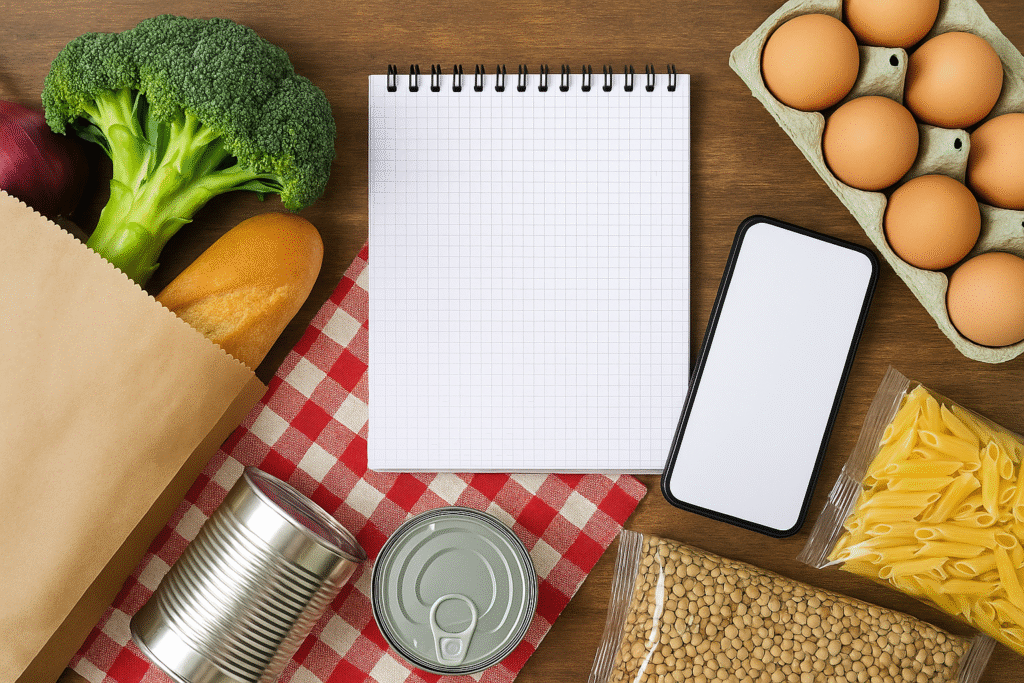How to apply for inflation proof grocery hacks
Discover 9 hacks to save money at the supermarket and protect your wallet from inflation with practical tips that are easy to apply.

Inflation is no joke, especially when it hits your grocery bill. One day you’re buying your favorite cereal for $3.99, and the next, it’s creeping past $6.00. If you’re feeling the pinch every time you check out at the supermarket, you’re not alone. But the good news is: there are smart, inflation-proof grocery hacks you can start applying today to make your money go further without sacrificing quality or nutrition.
Below, we’ll walk through easy, actionable steps you can use to fight back against rising prices and win.
1. Start with a Smart Shopping List (and Stick to It)
Impulse buys are one of the biggest culprits behind high grocery bills. A smart, inflation-proof strategy starts before you even set foot in the store.
Plan your meals for the week, check what you already have at home, and create a list based only on what you need.
Bonus tip: Use apps like Out of Milk or AnyList to track your pantry and create shopping lists with built-in cost estimations.
2. Embrace the Power of Store Brands
Gone are the days when generic brands meant lower quality. Most store-brand items are made by the same manufacturers as big-name brands, sometimes even in the same facility. The price difference? Often 20–30% less.
Try switching your staples (rice, pasta, canned goods, cleaning supplies) to store brands. You’ll be surprised how little you miss the branded versions and how much you save.
3. Buy in Bulk (But Only When It Makes Sense)
Buying in bulk is a classic inflation-fighting strategy, but it only works if you’re smart about it. Focus on non-perishables and items you use often, like:
- Rice, beans, and lentils;
- Pasta and grains;
- Toilet paper and paper towels;
- Frozen vegetables;
- Canned goods.
Avoid buying bulk perishables unless you’re sure you can use or freeze them before they go bad. Waste isn’t a saving, it’s a loss.
4. Use Cashback and Rewards Apps
In today’s digital age, there’s no excuse for not getting a little money back on your purchases. Apps like Ibotta, Fetch Rewards, and Rakuten offer cashback, points, or gift cards when you scan your grocery receipts or shop through affiliated stores.
Over time, these rewards add up—sometimes covering the cost of an entire shopping trip.
5. Track Sales Cycles and Shop the Flyers
Most grocery stores follow a predictable sales cycle, rotating discounts on common items every 6 to 8 weeks. Start paying attention to your store’s weekly flyers (usually available online), and stock up on essentials when they’re at their lowest price.
Pro tip: combine sales with digital or paper coupons for double savings.
6. Opt for Frozen Over Fresh (Sometimes)
When inflation hits the fresh produce aisle, don’t overlook the frozen section. Frozen fruits and vegetables are often picked and preserved at peak ripeness, meaning you get full flavor and nutrition—usually at a fraction of the cost, especially when out of season.
They also last longer, which reduces waste (and saves you money in the long run).
7. Cook More, Waste Less
Eating out or buying ready-made meals might be convenient, but they cost a lot more per serving. Batch cooking, meal prepping, and learning simple recipes can reduce your weekly expenses drastically.
Also, learn to love leftovers. A roasted chicken today can become sandwiches, soup, or stir-fry tomorrow. Don’t toss food—repurpose it!
8. Use a Grocery Budgeting System
Budgeting doesn’t mean being restrictive, it means being aware. Whether you use the envelope method, a spreadsheet, or a budgeting app like YNAB or Mint, knowing how much you’re spending (and where) is essential to identifying areas to cut back.
Set a monthly grocery limit and challenge yourself to stay under it using the hacks above.
9. Consider Discount Stores or Local Markets
You don’t have to shop at the biggest chain to find the best prices. Discount grocery chains like Aldi, Lidl, or regional warehouse stores often have competitive prices on high-quality goods.
Farmers’ markets or local cooperatives can also offer fresh produce at better prices than supermarkets, especially if you shop near closing time
Final Thoughts
Inflation may be outside your control, but how you shop isn’t. By applying these inflation-proof grocery hacks, you can stretch your dollar, reduce waste, and keep your fridge stocked with quality food without overspending.
It’s not about extreme couponing or giving up what you love, it’s about shopping smarter, being intentional, and building habits that protect your wallet no matter what the economy throws your way.





